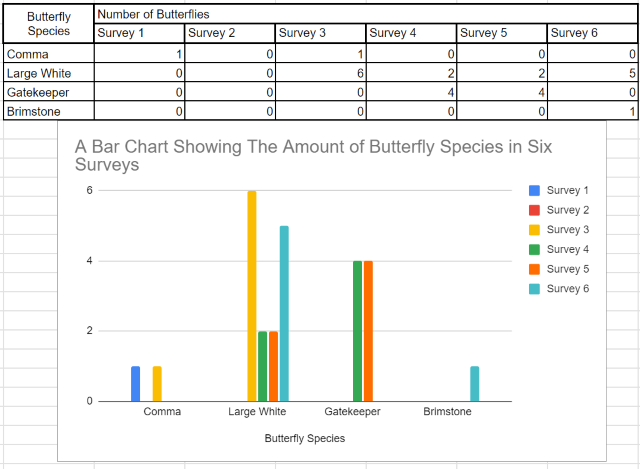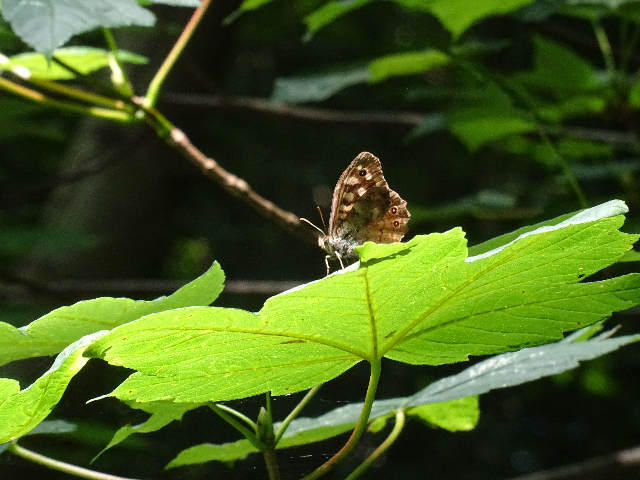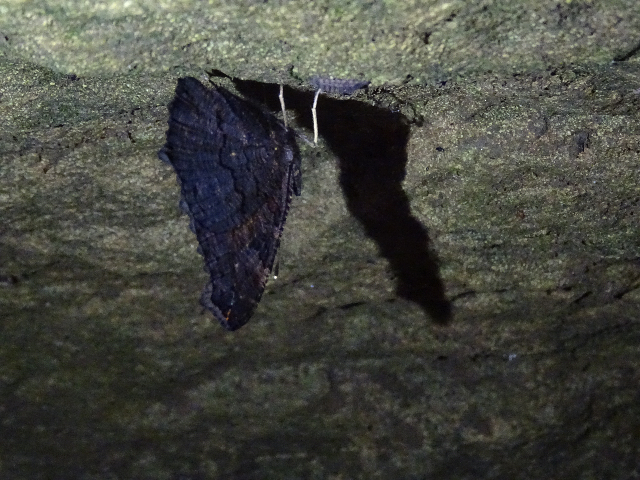Aim:
Over the past four days, our goal has been contributing to the Big Butterfly Count. This nationwide survey aims to ‘assess the health of our environment simply by counting the amount and type of butterflies’.
Equipment:
The only two pieces of equipment we required were a method of telling time and the Big Butterfly Count app.
Method:
Our method remained the same for all surveys we completed in the garden and the woods: look for butterflies over a 15-minute period, and then record them after identification.
Results:
Garden:

Woodland:

Additional Observations:
In total, we identified five species of butterflies in the garden: Comma, Large White, Gatekeeper, Brimstone and Holly Blue. However, we did not spot the Holly Blue during our surveys and therefore did not record it.

From some research, we have learned that most of the Speckled Woods we saw are male because males perch in sunny patches and chase off rival butterflies of all species.
However, the most interesting find was the Peacocks as they were hanging upside-down from a rocky outcrop, fast asleep

Conclusion:
In the garden, Large Whites were the most common with 15 total sightings. This is 7 more than the Gatekeeper, the second most frequent butterfly. Meanwhile, the Comma and Brimstone butterflies were the least common with 3 combined sightings. Over at the woods, Speckled Woods were most frequent with 8 total sightings, 6 more than those of the Peacocks.
Two reasons why the garden butterflies weren’t in the woodland and vice versa could be that some butterflies have specific plants they lay their eggs on and have preferred food sources: Large Whites mostly lay eggs on cabbages and brussel sprouts, and Speckled Woods eat honeydew (a liquid produced by aphids that live in trees).
Evaluation:
I strongly feel that we succeeded in our goal, but there was one main problem. We couldn’t identify certain butterflies we saw as you need to get quite close to see the markings. However, I feel that we improved when doing the woods surveys by taking a camera with zoom. This way, I was able to get a close-up view with a smaller risk of startling the butterfly.

